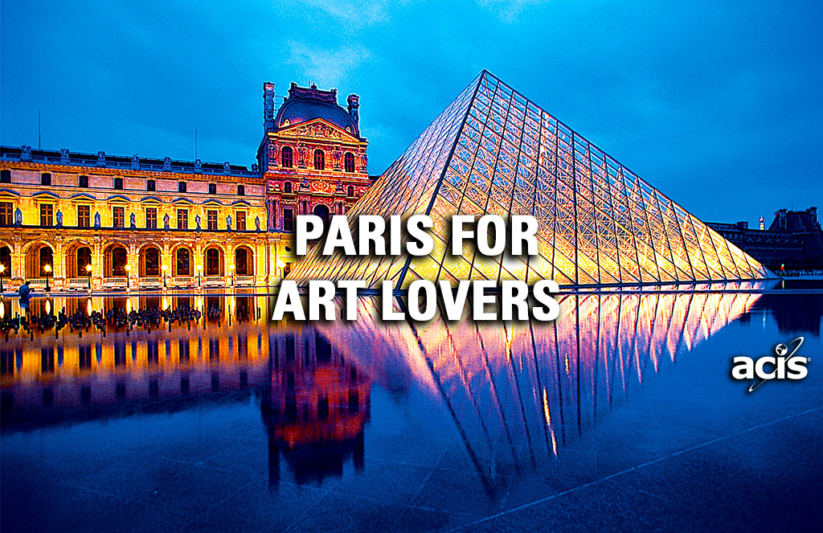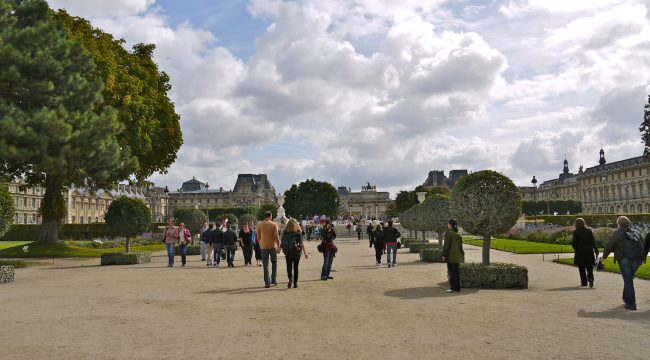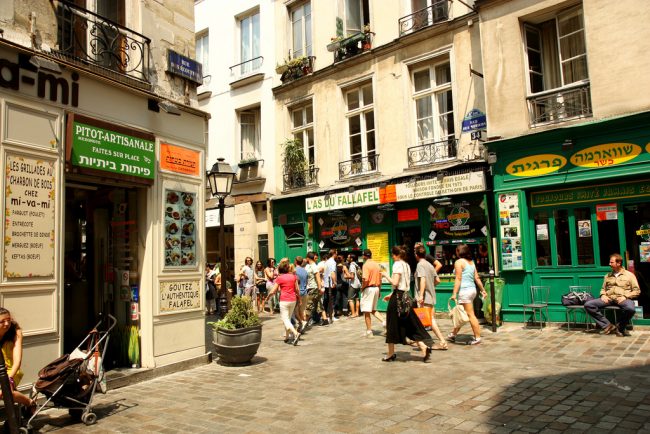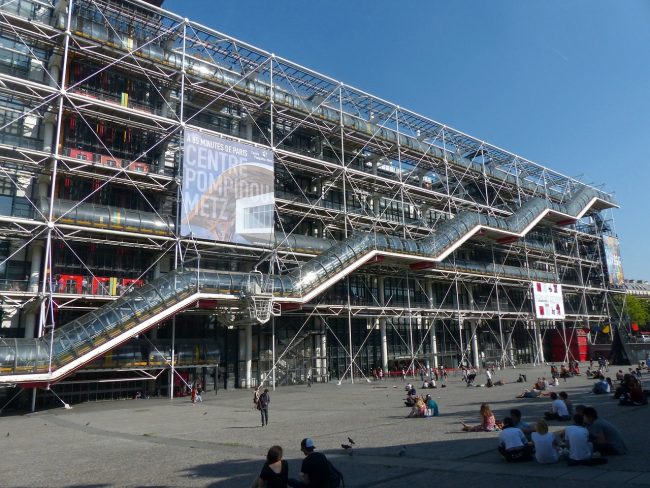Paris for Art Lovers

If you’re a real lover of art, whether you’ve been to Paris before or not, it can be hard to know just how to see it all in the few days you usually have. Over time, having spent countless weekends exploring the city on my own, and then taking students and teachers to experience these wonders with me, I have put together this small itinerary. For me, this is the best way to experience the wonders that Paris has to offer in three art-packed days.
Day 1
Morning at the Musée D’Orsay

The Musée d’Orsay is the home of French impressionism, where you will find masterpieces like Edouard Manet’s Le Déjeuner sur l’herbe and Olympia. Once a railway station built for the Universal Exhibition in 1900, this converted museum opened in 1986 to house the modern art collection from the Louvre. The space itself is worth seeing: grand, infused with light and giving fantastic views over the Seine towards the Jardin des Tuileries. It’s a worthy space for a magnificent collection of modern painting and sculpture, with a smaller focus on photography and the decorative arts.
Tips:
- Get there early before opening time to avoid the long queue.
- Start by making your way up to the 5th floor, this is where the major impressionist displays are gathered.
- Don’t try to see the whole museum at once, it can be overwhelming, pick a few sections you’re most interested in and spend time there.
Afternoon at the Luxembourg Gardens and Saint-Germain Art Galleries

After lunch, take a stroll through the Luxembourg Gardens. There are over one hundred 19th century sculptures and fountains scattered around the gardens, representing great artists, writers and the queens of France. There’s also a little Statue of Liberty if you can find it! The beautiful Palais du Luxembourg is now the seat of the French Senate, rarely open to the public, but next to it the former orangery has become an important art museum with temporary exhibits. Afterward, make your way down towards Saint-Germain, where you can explore local art galleries in and around the Rue de Seine. Nearby, if you want to see inside the country’s most prestigious art school, wander into the Ecole des Beaux-Arts at 14 rue Bonaparte.
Tips:
- There are often photography displays on the garden railings between the RER exit and the Palais du Luxembourg.
- At the gardens, don’t miss the beautiful Medici fountain.
- If you like big, eye-catching art books, take a look at the Taschen bookstore on Rue Jacob.
Day 2
Morning in the Louvre

Once a fortress, then a palace, and then the apartments of Napoleon III (still there and worth exploring on the 1st floor of the Richelieu wing), the Louvre has also been a museum for over 200 years. With around 35,000 objects on display, you really have to pick what you want to see. Be it Italian Renaissance, Egyptian or Islamic art, every department is its own world-class collection, so choose wisely. If you want to go on a highlights tour, be sure to visit the Venus de Milo, the Victory of Samothrace, Napoleon’s apartments, the Egyptian mummies, the Italian wing where the crowds will be thronging towards the Mona Lisa, and the Jean-Louis David and Delacroix paintings in the French 19th-century room. Plan for at least 2-3 hours here.
Tips:
- If there are lots of people at the main pyramid entrance, search out the Porte des Lions entrance, it’s hidden under an archway near the Seine.
- You can’t see the Louvre in a day. Not even in a week. Take the map and choose the 2-3 sections you’re most interested in, taking the time to explore those.
- You can’t avoid the security queues (bags are scanned and backpacks have to be checked in) but you can avoid the ticket queues by buying these online.
Afternoon in the Jardin des Tuileries

From the Louvre, it’s a short walk to the Tuileries Gardens. Aside from some remarkable contemporary and 19th-century sculptures dotted around, this park is home to two top-class museums: the Jeu de Paume and the Musée de l’Orangerie. The Jeu de Paume has no permanent exhibit, but if you’re a fan of photography then it’s worth checking out what exhibition is on when you’re there. The Musée de l’Orangerie, just opposite, is worth visiting for the permanent display of Monet’s waterlilies: these giant paintings are housed in a purpose-built space in the museum. There’s more French modern art downstairs, and often excellent temporary exhibitions.
Tips:
- Take time to appreciate Paris’ parks. The Jardin des Tuileries has some charming but pricey cafés, or you can just grab an empty chair and sketch the view much like Eduard Manet did when he painted Music in the Tuileries Gardens.
- Get a combined ticket to the Musée d’Orsay and the Musée de l’Orangerie to save a few euros!
Day 3
Morning in the Marais district

On the third morning, you can explore the Marais district of Paris and its vibrant art galleries. This historic area still charms visitors with its narrow streets and slanting houses: it’s a place where you simply must embrace getting lost. You can start at the Place des Vosges, one of the oldest and most beautiful squares in Paris, with its leafy park and art galleries. It was and is the home of the rich and famous – Victor Hugo once resided at no.6. From here you can wander through the streets of the Marais, exploring the galleries which are clustered to the north, around the Rue de Turenne, or south towards the Rue Saint-Paul. You can spend a lot of time exploring, or if you prefer, head over to the newly reopened Musée Picasso at 5 Rue de Thorigny.
Tips:
- Discover the hidden charms of the Village Saint Paul, just off rue Charlemagne and rue Saint-Paul, with its village atmosphere, boutique shops, galleries and quiet lunch and brunch spots.
- Through a passage at no.10 rue des Rosiers, you’ll come to a secluded garden where locals come for picnic lunches and where a section of a 13th-century priory wall still stands.
Afternoon at the Centre Pompidou

The Centre Pompidou is home to a world-renowned collection of modern and contemporary art, from works by Matisse and Marcel Duchamp to Andy Warhol and Louise Bougeois. But it is also a cultural centre housing a library, cinema, theatre and numerous educational and conference spaces. Love it or hate it, the building itself is quite spectacular and is the result of an international architectural competition which was won by a team of architects: Renzo Piano, Richard Rogers, and Gianfranco Franchini. Initially called a “monster” by the media when it was completed in 1977, this building is now a well-loved presence in the city and an architectural landmark.
Tips:
- Have a coffee break or book dinner on the top floor of the Centre Pompidou for a gorgeous view over the rooftops of Paris.
- Queues can be long, early evening is the best time to go and still have 2-3 leisurely hours to visit.
- Don’t miss the startling kinetic Stravinsky fountain on Rue Brisemiche right next to the museum. It was created by the husband and wife sculptors Jean Tinguely and Niki de Saint Phalle.
Interested in going on your own Paris art adventure? Check out our Paris Your Way Educational Tour to Paris!











On our March trip to France with ACIS, Betrand, our Tour Manager, and I hit upon a great idea for the Musée d’Orsay. I had 22 8th graders in tow and we wanted them to use their time wisely in the museum. We told them to each find their favorite work of art, take a photo of it, along with the name and artist and be ready to make a presentation to the group later. It became a sort of treasure hunt for them. Later, we were strolling along, came to some steps, all took a seat and each of us presented our work of art to the group. We told why we liked it, who created it, etc. Upon our return to school, one of my girls wrote a poem for English class that was inspired by some of the Impressionist paintings she saw and how she was moved by the brushstrokes. What an amazing part of a fabulous trip. One I will never forget. Thank you!